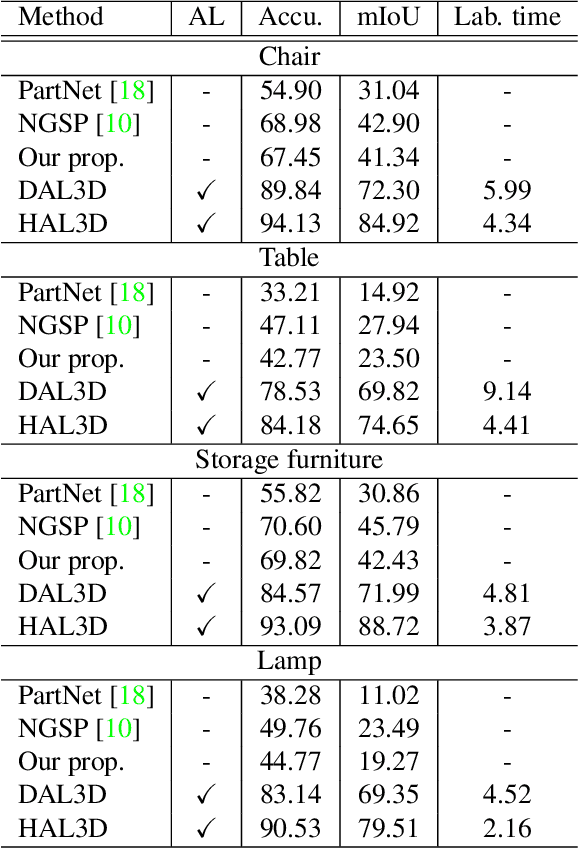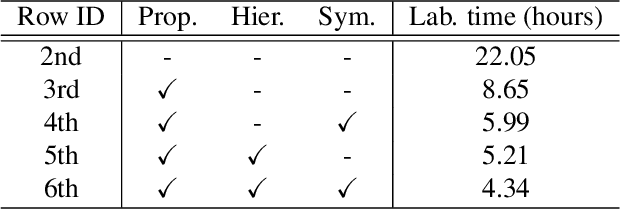Eric Bennett
DPA-Net: Structured 3D Abstraction from Sparse Views via Differentiable Primitive Assembly
Apr 02, 2024



Abstract:We present a differentiable rendering framework to learn structured 3D abstractions in the form of primitive assemblies from sparse RGB images capturing a 3D object. By leveraging differentiable volume rendering, our method does not require 3D supervision. Architecturally, our network follows the general pipeline of an image-conditioned neural radiance field (NeRF) exemplified by pixelNeRF for color prediction. As our core contribution, we introduce differential primitive assembly (DPA) into NeRF to output a 3D occupancy field in place of density prediction, where the predicted occupancies serve as opacity values for volume rendering. Our network, coined DPA-Net, produces a union of convexes, each as an intersection of convex quadric primitives, to approximate the target 3D object, subject to an abstraction loss and a masking loss, both defined in the image space upon volume rendering. With test-time adaptation and additional sampling and loss designs aimed at improving the accuracy and compactness of the obtained assemblies, our method demonstrates superior performance over state-of-the-art alternatives for 3D primitive abstraction from sparse views.
RoSI: Recovering 3D Shape Interiors from Few Articulation Images
Apr 13, 2023Abstract:The dominant majority of 3D models that appear in gaming, VR/AR, and those we use to train geometric deep learning algorithms are incomplete, since they are modeled as surface meshes and missing their interior structures. We present a learning framework to recover the shape interiors (RoSI) of existing 3D models with only their exteriors from multi-view and multi-articulation images. Given a set of RGB images that capture a target 3D object in different articulated poses, possibly from only few views, our method infers the interior planes that are observable in the input images. Our neural architecture is trained in a category-agnostic manner and it consists of a motion-aware multi-view analysis phase including pose, depth, and motion estimations, followed by interior plane detection in images and 3D space, and finally multi-view plane fusion. In addition, our method also predicts part articulations and is able to realize and even extrapolate the captured motions on the target 3D object. We evaluate our method by quantitative and qualitative comparisons to baselines and alternative solutions, as well as testing on untrained object categories and real image inputs to assess its generalization capabilities.
HAL3D: Hierarchical Active Learning for Fine-Grained 3D Part Labeling
Jan 25, 2023



Abstract:We present the first active learning tool for fine-grained 3D part labeling, a problem which challenges even the most advanced deep learning (DL) methods due to the significant structural variations among the small and intricate parts. For the same reason, the necessary data annotation effort is tremendous, motivating approaches to minimize human involvement. Our labeling tool iteratively verifies or modifies part labels predicted by a deep neural network, with human feedback continually improving the network prediction. To effectively reduce human efforts, we develop two novel features in our tool, hierarchical and symmetry-aware active labeling. Our human-in-the-loop approach, coined HAL3D, achieves 100% accuracy (barring human errors) on any test set with pre-defined hierarchical part labels, with 80% time-saving over manual effort.
 Add to Chrome
Add to Chrome Add to Firefox
Add to Firefox Add to Edge
Add to Edge